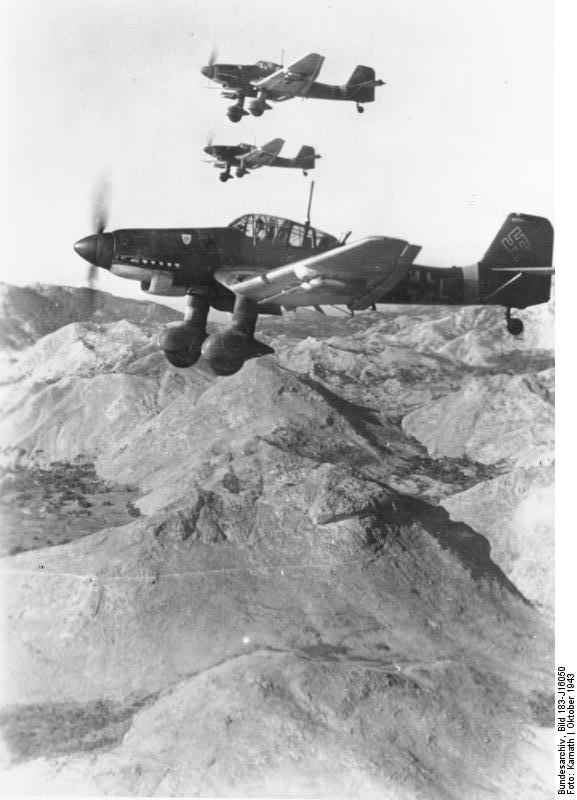Vorizia on:
[Wikipedia]
[Google]
[Amazon]
The Razing of Vorizia ( el, Καταστροφή των Βοριζίων) refers to the destruction of the village of
excerpt
 The village of Vorizia (or ''Voriza'') is built on the south slopes of Mount Ida (Crete), Mt Ida, located approximately south of Heraklion. Its residents are primarily occupied with olive tree cultivation and pastoral farming.
During the German occupation of Crete, residents of Vorizia participated or provided aid to the Cretan resistance, resistance. The first resistance group in the region was established in June 1941 by Georgios Petrakis (Petrakogiorgis) and five men from Vorizia.
The village of Vorizia (or ''Voriza'') is built on the south slopes of Mount Ida (Crete), Mt Ida, located approximately south of Heraklion. Its residents are primarily occupied with olive tree cultivation and pastoral farming.
During the German occupation of Crete, residents of Vorizia participated or provided aid to the Cretan resistance, resistance. The first resistance group in the region was established in June 1941 by Georgios Petrakis (Petrakogiorgis) and five men from Vorizia.
archive
here
/ref> In reprisal for the help of locals to the partisans, General Friedrich-Wilhelm Müller, Müller ordered German forces to surround Vorizia on 27 August 1943. The villagers were led to the churchyard, three of them were summarily shot that day and two the next day. Later on, the others were driven out of the village and seven Junkers Ju 87, Ju 87 ''Stuka'' dive bombers appeared, dropping a total of 21 (presumably 50 kg) bombs. Following the bombing, the village ruins were doused with petrol and set on fire.
Βορίζια, 27 Αυγούστου 1943
, greekholocausts.gr. Archive
copy27 Αυγούστου 1943: Βομβαρδισμός και εκθεμελίωση των Βοριζίων
e-mesara.gr. Archive
copyGerman occupation of Crete: Vorizia
(in German -
translate
Νέα Βορίζια: Ενα ιστορικό χωριό-φάντασμα στις πλαγιές του Ψηλορείτη
from iefimerida.gr {{DEFAULTSORT:Vorizia Razing Conflicts in 1943 Nazi war crimes in Greece 1943 in Greece August 1943 events Crete in World War II
Vorizia
The Razing of Vorizia ( el, Καταστροφή των Βοριζίων) refers to the destruction of the village of Vorizia () in Crete (Greece) by aerial bombardment and the murder of five of its inhabitants on 27 August 1943 by Axis occupatio ...
() in Crete
Crete ( el, Κρήτη, translit=, Modern: , Ancient: ) is the largest and most populous of the Greek islands, the 88th largest island in the world and the fifth largest island in the Mediterranean Sea, after Sicily, Sardinia, Cyprus, and ...
(Greece
Greece,, or , romanized: ', officially the Hellenic Republic, is a country in Southeast Europe. It is situated on the southern tip of the Balkans, and is located at the crossroads of Europe, Asia, and Africa. Greece shares land borders with ...
) by aerial bombardment and the murder of five of its inhabitants on 27 August 1943 by Axis occupation of Greece, German occupying forces during World War II.Beevor, Antony. ''Crete: The Battle and the Resistance'', John Murray Ltd, 2005, pp.145. Καζαντζάκης, Ν., Καλιτσουνάκης, Ι. και Κακριδής, Ι.Θ. ''Έκθεσις της Κεντρικής Επιτροπής Διαπιστώσεως Ωμοτήτων εν Κρήτη''. Σύνταξις 29/6 - 6/8/1945. Έκδοση Δήμου Ηρακλείου, 1983excerpt
Background
 The village of Vorizia (or ''Voriza'') is built on the south slopes of Mount Ida (Crete), Mt Ida, located approximately south of Heraklion. Its residents are primarily occupied with olive tree cultivation and pastoral farming.
During the German occupation of Crete, residents of Vorizia participated or provided aid to the Cretan resistance, resistance. The first resistance group in the region was established in June 1941 by Georgios Petrakis (Petrakogiorgis) and five men from Vorizia.
The village of Vorizia (or ''Voriza'') is built on the south slopes of Mount Ida (Crete), Mt Ida, located approximately south of Heraklion. Its residents are primarily occupied with olive tree cultivation and pastoral farming.
During the German occupation of Crete, residents of Vorizia participated or provided aid to the Cretan resistance, resistance. The first resistance group in the region was established in June 1941 by Georgios Petrakis (Petrakogiorgis) and five men from Vorizia.
The razing
On 15 August 1943, the resistance group of Petrakogiorgis clashed with a German force. Despite being heavily outnumbered, Petrakogiorgis and his band managed to escape after fierce fighting that lasted the whole day. The partisans lost seven men whereas the Germans thirteen. This conflict came to be known as the Battle of Trahili, owing its name to the area it took place.Η μάχη στο Τραχήλι στις 15 Αυγούστου 1943, Πατρίς onLine, 24 Αυγούστου 2012archive
here
/ref> In reprisal for the help of locals to the partisans, General Friedrich-Wilhelm Müller, Müller ordered German forces to surround Vorizia on 27 August 1943. The villagers were led to the churchyard, three of them were summarily shot that day and two the next day. Later on, the others were driven out of the village and seven Junkers Ju 87, Ju 87 ''Stuka'' dive bombers appeared, dropping a total of 21 (presumably 50 kg) bombs. Following the bombing, the village ruins were doused with petrol and set on fire.
Aftermath
As a result of the bombing, Vorizia was completely destroyed and its residents were forced to seek shelter in nearby villages. After the war, the Greek state built a new settlement near the destroyed one. Nevertheless, the locals did not agree to relocate and chose to rebuild their village on the ruins on the destroyed one.See also
*Razing of Kandanos *Razing of AnogeiaReferences
External links
Βορίζια, 27 Αυγούστου 1943
, greekholocausts.gr. Archive
copy
e-mesara.gr. Archive
copy
(in German -
translate
Νέα Βορίζια: Ενα ιστορικό χωριό-φάντασμα στις πλαγιές του Ψηλορείτη
from iefimerida.gr {{DEFAULTSORT:Vorizia Razing Conflicts in 1943 Nazi war crimes in Greece 1943 in Greece August 1943 events Crete in World War II